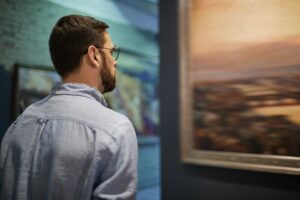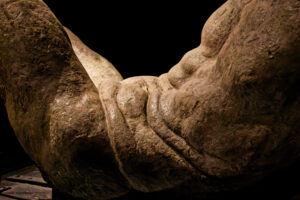
Exponent of Russian impressionist painting, Leonard Viktorovich Turzhansky (1874, Yekaterininburg ⸺ 1945, Moscow) «can rightly be considered an heir to Levitan’s “landscape of mood”. In his works, he expresses profound emotions, albeit held back and never overflowing. A man of few words, Turzhansky is laconic even in figurative means, preferring spacious compositions with few objects. A painter by nature, Turzhansky thinks and feels through color” the art historian Natalya Stankevich writes about him.
Born in Yekaterinburg in the Urals, Turzhansky showed a strong interest in art as a boy and studied first in St. Petersburg at the Central Institute of Technical Drawing, then at the famous Moscow School of Painting, Sculpture, and Architecture, where he studied between the others by Valentin Serov and Konstantin Korovin. However, his great teacher is nature, in particular, that of his beloved Urals, whom the painter will regularly return throughout his life: although he resides in Moscow, he, in fact, has a house in Maly Istok, a small village not far from his hometown.
Turzhansky demonstrated his vocation for landscape painting already during his years of study when he distinguished himself by presenting a cycle of works dedicated to a trip to Northern Russia at an exhibition of Itinerant painters, some of which were immediately purchased for the “Tretyakov” Gallery. Among his favorite subjects, in addition to rural landscapes, are country animals, especially horses. A member of the Union of Russian Painters since 1912, Turzhansky also established himself as a portraitist: in fact, his portrait of the writer and poet Ivan Bunin is well-known.
In his works, we find quiet atmospheres, a balanced and essential composition, brown and full, reddish, green, and yellowish hues, which recall the colors of the earth and demonstrate the painter’s immense color talent, who despite adopting a limited range in the individual work of colors, manages to fully enhance each of them.



